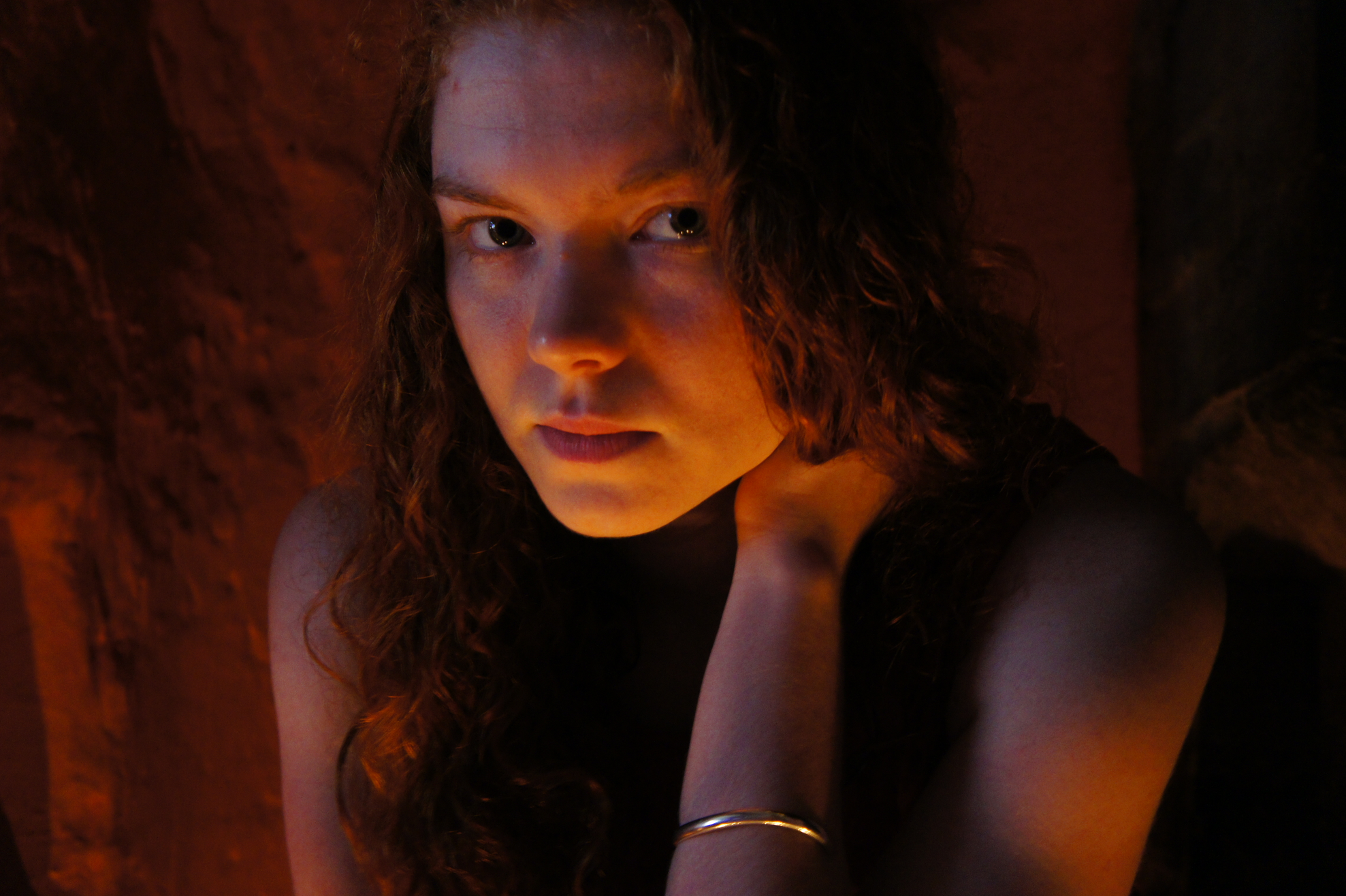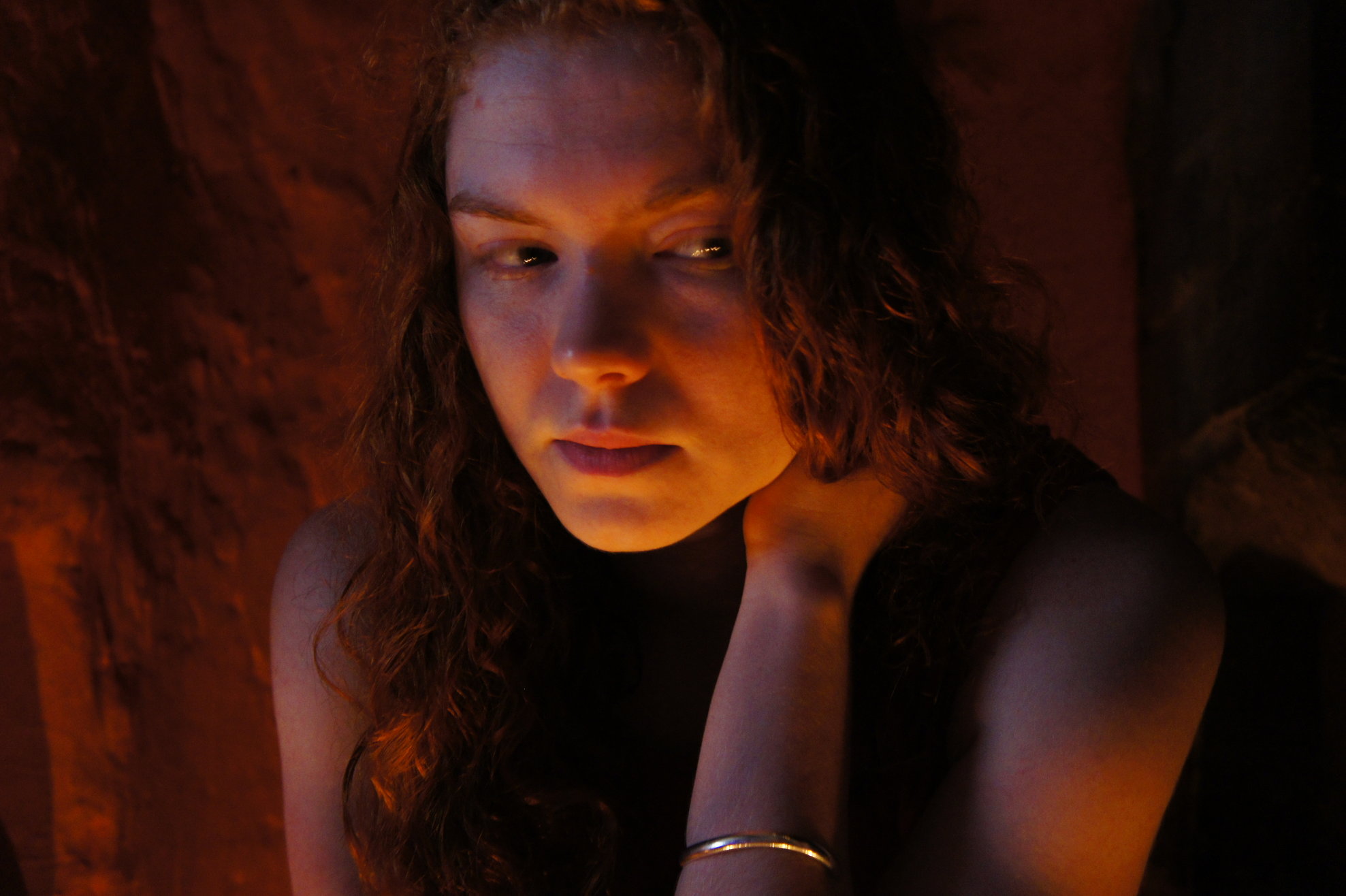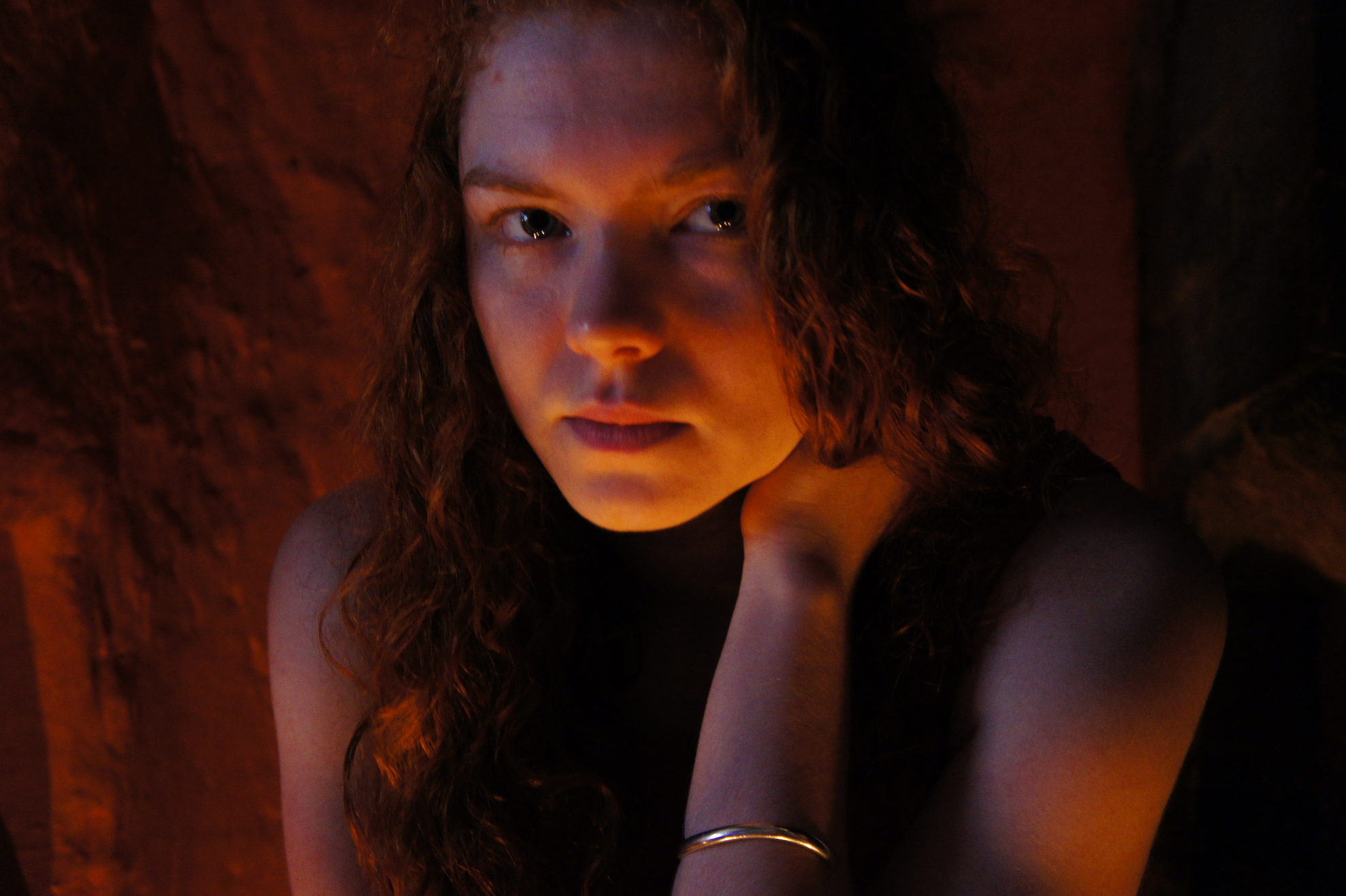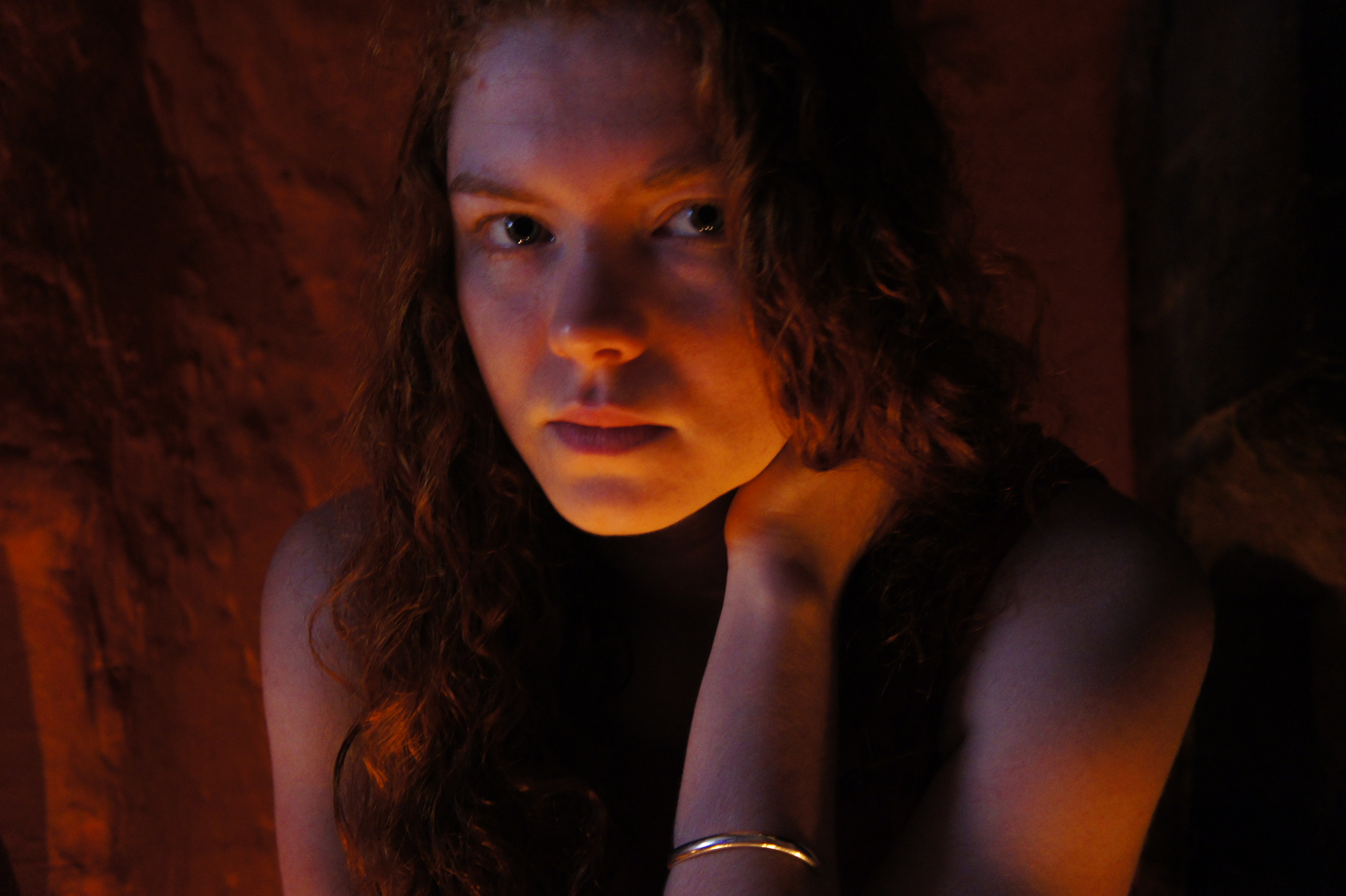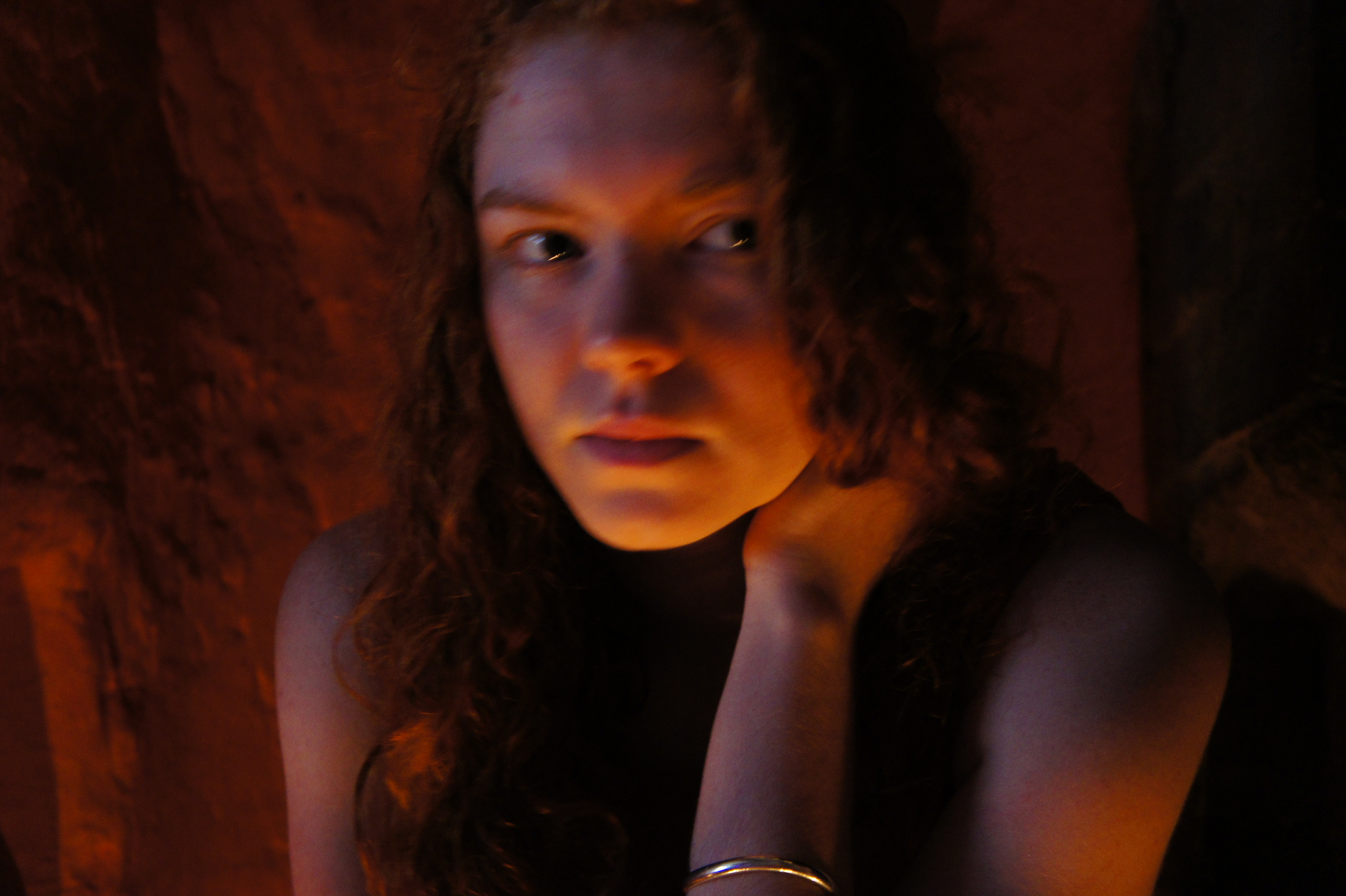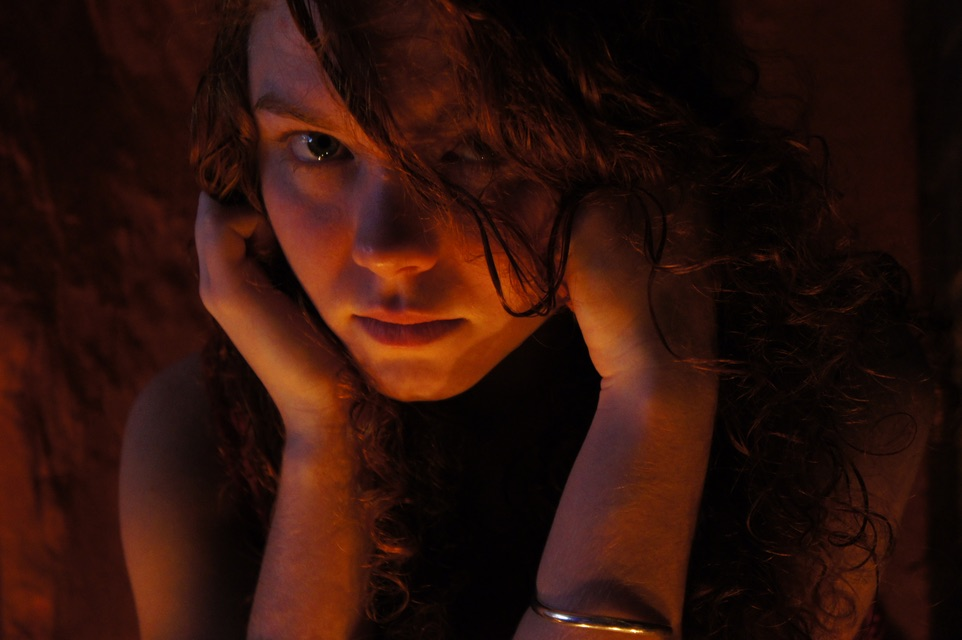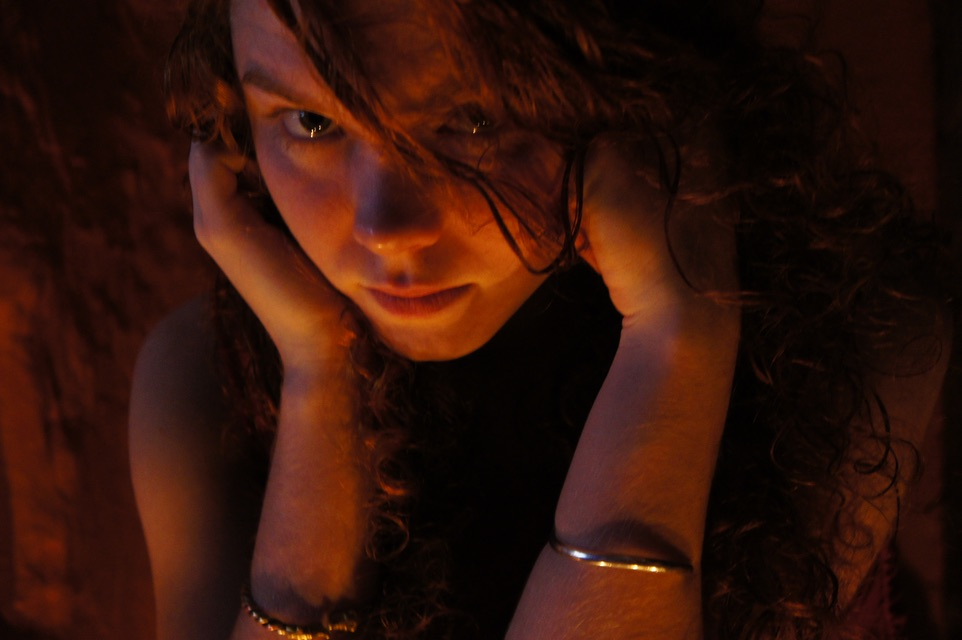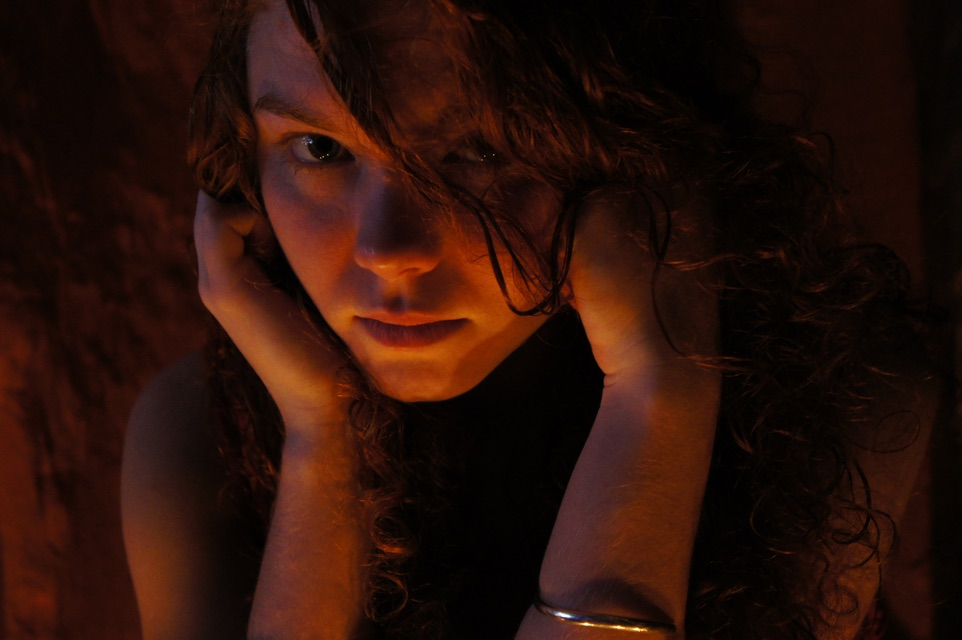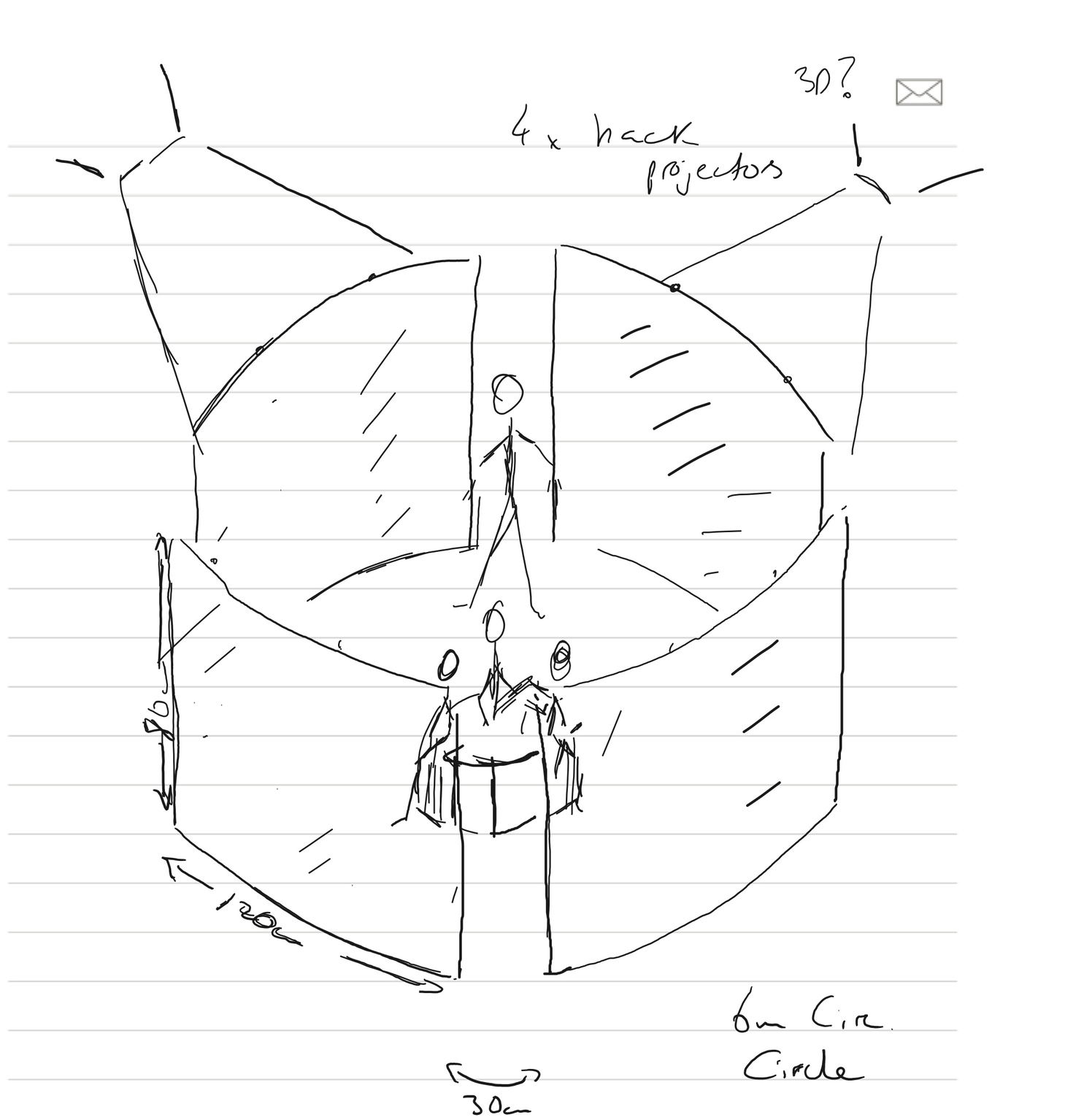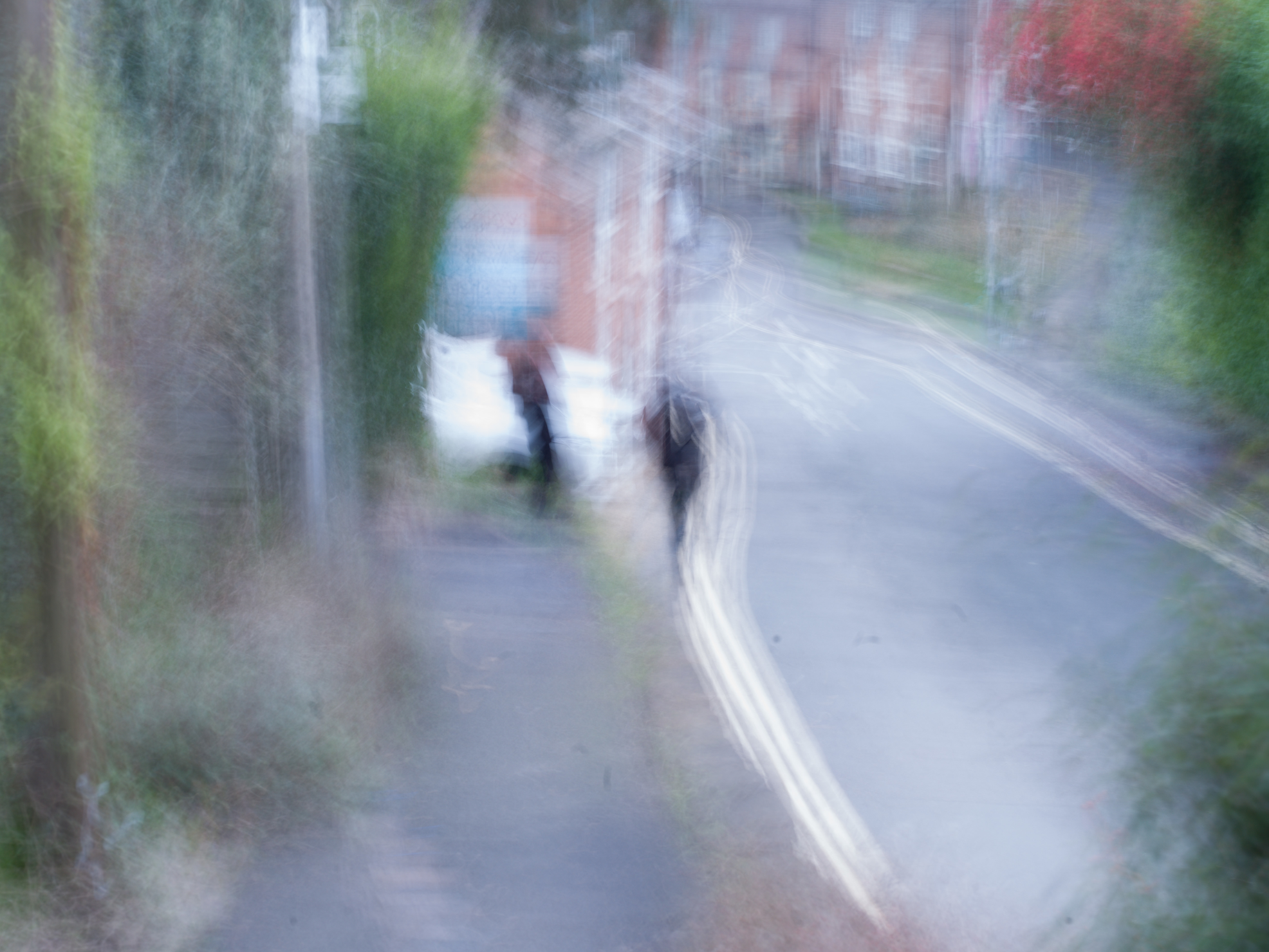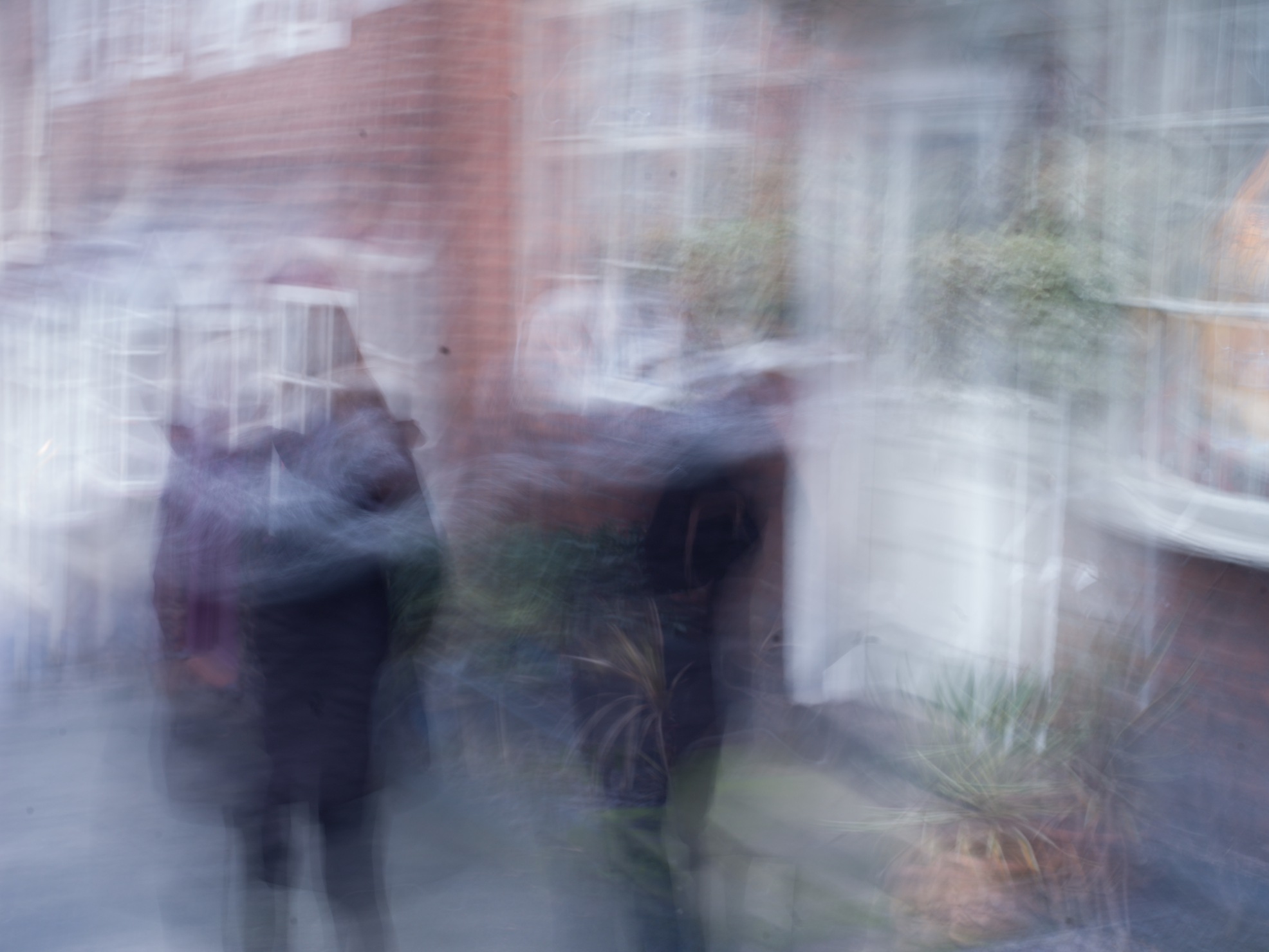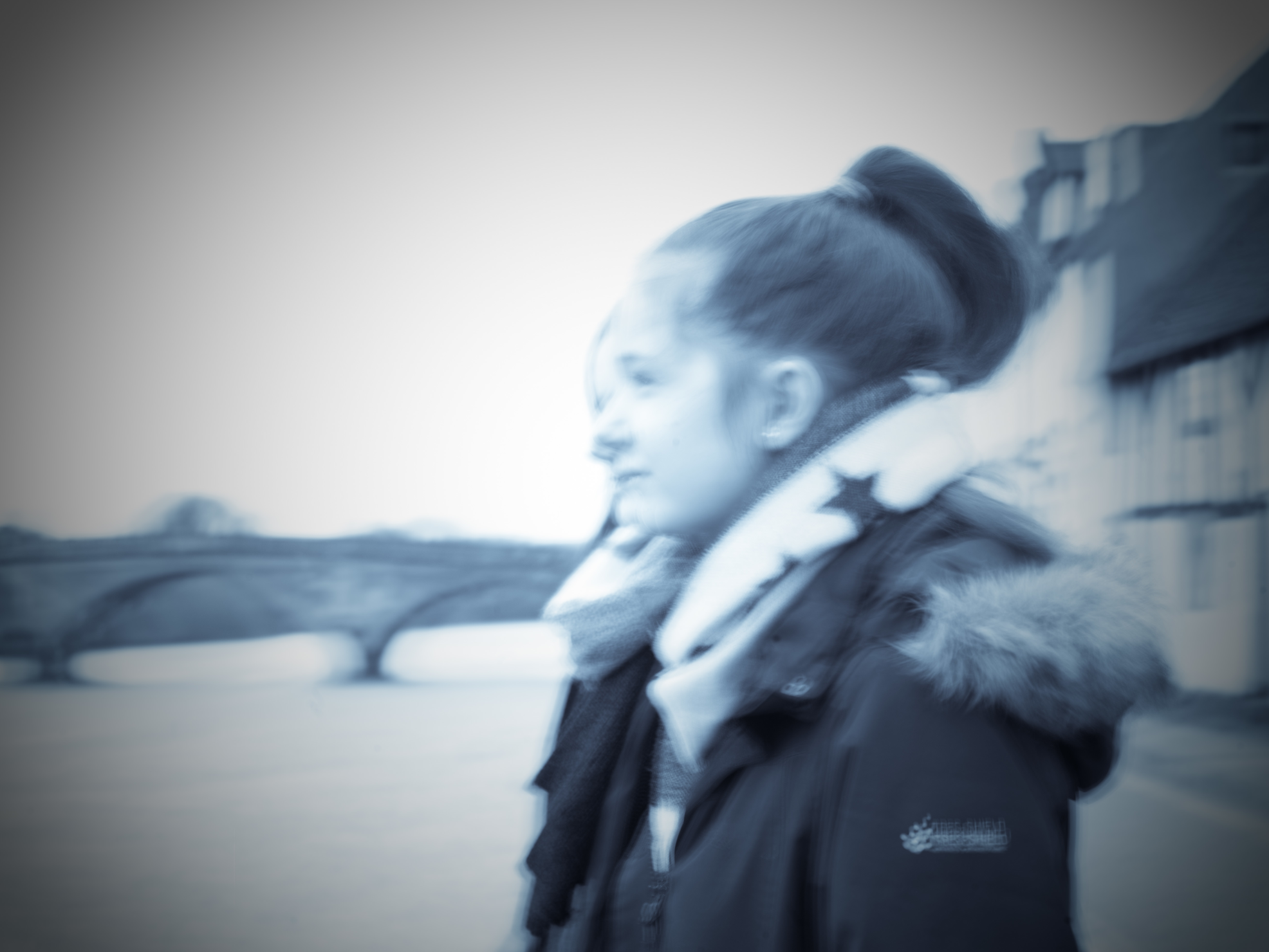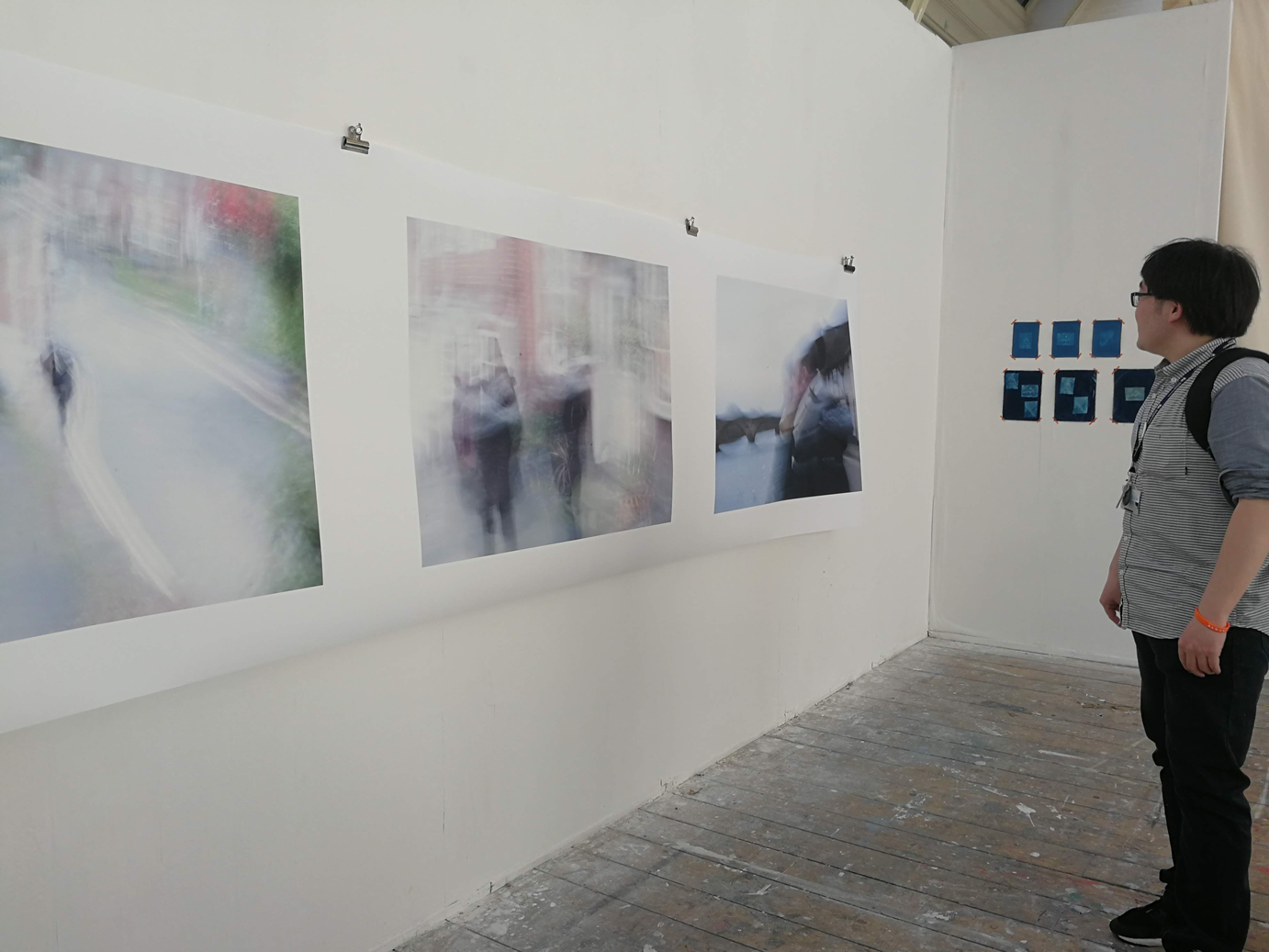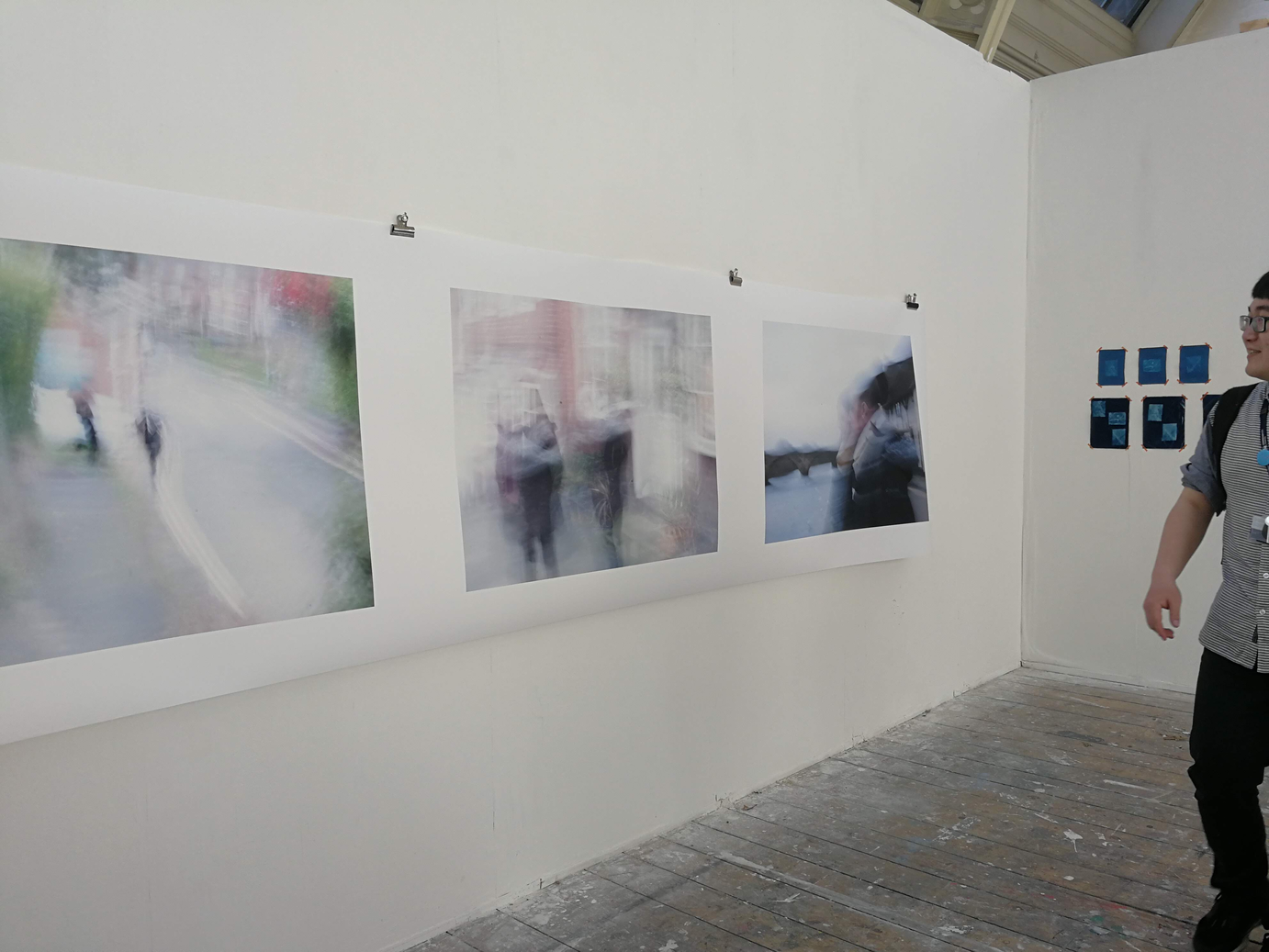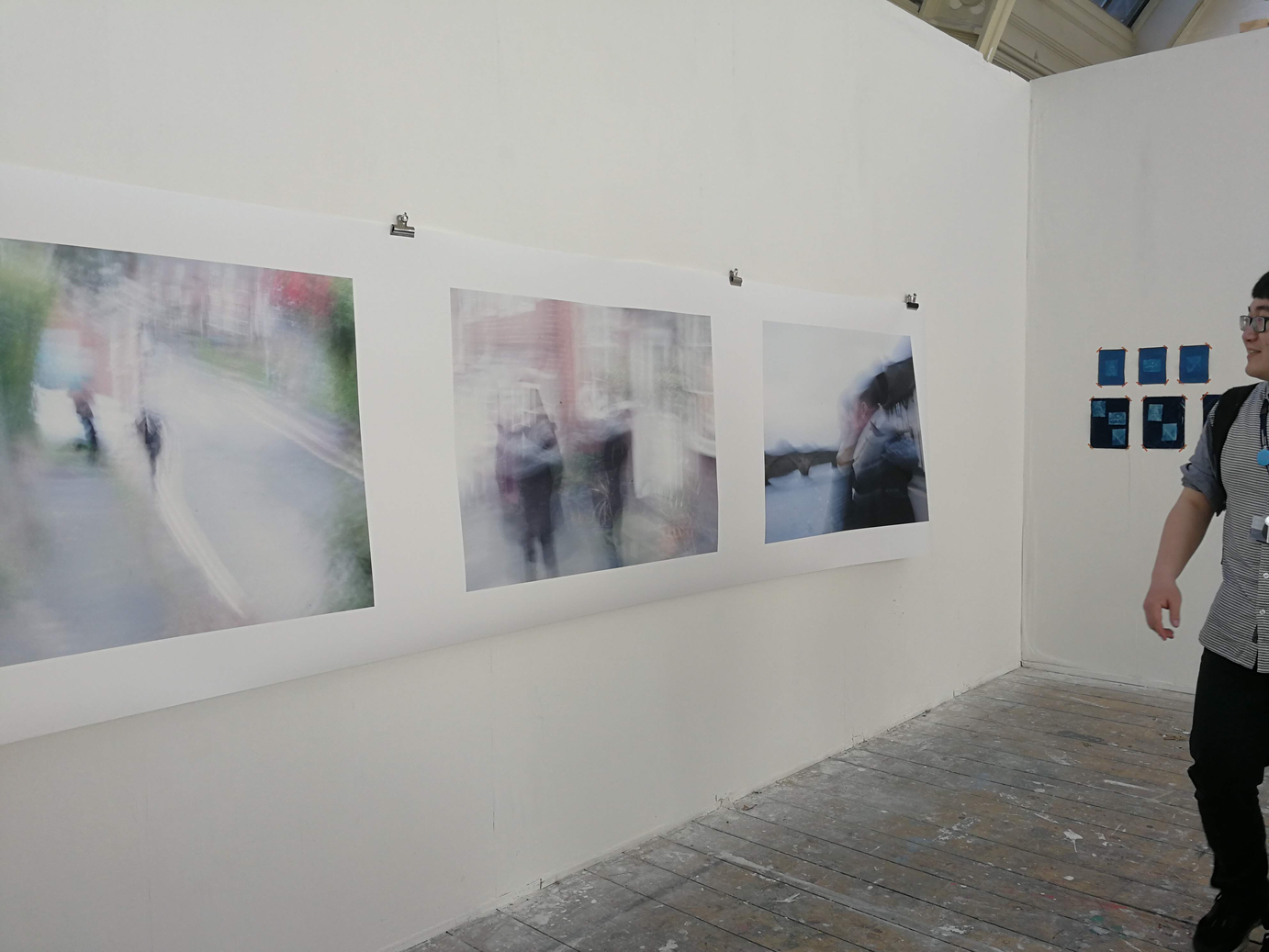This page examines the notion of the extended gaze as a relational curve, from a feminist praxis. I interrogate whether a female gaze presents a corresponding relational arc for both the viewer and the subject, in relation to my practice.
The penetrating look of a young model can be a powerful tool for an artist, and can confront the viewer with its emotional arc of intensity. In girl sitting, I have used a series of stills as a method of highlighting the interval, or the inbetween moments, with the model staring into the lens, as a provocation to the viewer. This provocation calls on ideas of 'angry melancholia' (Kokoli 2016) highlighting how this rage can harness the agency of adolescence. In contrast to the patriarchal gaze as a form of control, I am situating the maternal gaze as one of inclination and relationality.
This series of photographs depicts my eldest daughter in her final year at school. The photographs were taken in low light, filmed solely in candlelight and the light of the fireplace at home, to evoke a warm glow and emphasise the golden hues of her hair and bangles, which reflected back the light. The series is a reverie on home and leaving, on adolescence and adulthood, on heimlich/unheimlich (homely/unhomely)in short, on the process of (be)coming. I am exploring the notion of the maternal gaze as one of inclination (Caverero 2016) and experimenting with ways of leaning into this gaze.
Using an iterative methodology I experiment with ways of presenting these original photographs as immersive videos and installations. This page maps these iterations, from multi screen videos to intimate projections on a curved screen and finally a slowly rotating projector in a circular space. I am experimenting with circular and curved viewing and whether this produces a corresponding inclination in the viewer.
I explore the notion of the Female gaze in relation to the series of photographs, Walking to School. This series of long exposure photos using a Hasselblad Medium Format camera, were a way for me to introduce myself to the twins, who are the subject of the artworks. I worked with the twins later in a studio, and in a motion capture suite, as archived in The Temporal Curve and The Geometric Curve.
I drew these sketches in preperation for an immersive installation with Mikhail Karakis and BCU at Tate Liverpool in April 2020. Due to the lockdown the work was shown digitally. However, I used the curved screens, that I had designed and made from transluscent back projection fabric to experiment with this iteration of girl sitting (2024).
This mapping out of the installation led to my above sketches for a 360 four screen installation, which I use in the PhD exhibition. The film shown here is a final iteration of girl sitting (2024) which was projected and shared to students in the Birmingham School of Art in March 2024. This iteration was projected onto the black felt, at eye-level, using a rotating projector. I was experimenting with projecting both on the four curved screens and the black felt to determine wnether the image was clear enough.
I experimented with the moving projector and the circular screens at NTU in July 2023, which can be seen here.
The second series of photographs, Walking to School, depicts identical twins as they traverse the journey to school in their hometown.
I used a walking-with methodology, opening up the shutter, to create a kineasthetic image that blurs the moving bodies. They walk together towards the River, their heads and bodies bent toward one another.
This route is familiar to both the twins and myself, as my home was on this hill for fifteen years, and I have traversed this route multiple times with my own children, taking them to and fro to school. The twins meandered freely moving down the hill, their tacit knowledge of each other's bodies and movements evidenced in the photographs.
The triptych shown here, Walking to School, was printed in a large format to see whether a relational dance was encouraged by the viewer.
This exhibition was part of a PhD Takeover that I co-led in July 2019 at the Birmingham School of Art, BCU. I was exploring whether a large scale format, in triptych form would encourage an embodied response in the viewer.
The participant shown here moved backwards and forwards in front of the triptych, unconsciously mirroring the movement of the twins. I am exploring embodiment as a form of knowing, drawing on feminist thinkers and affect theory.
